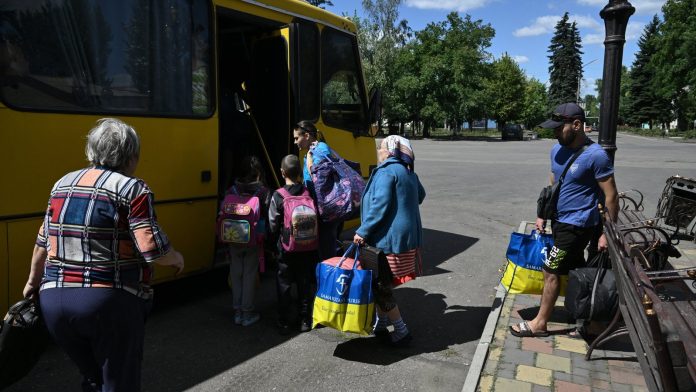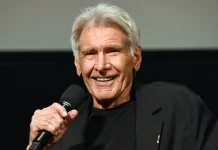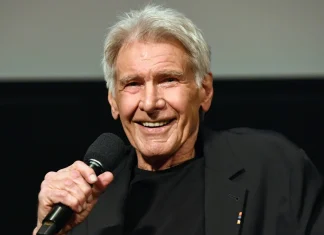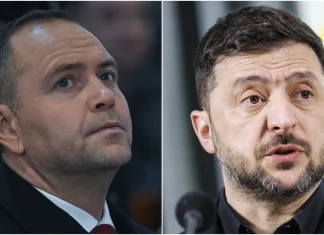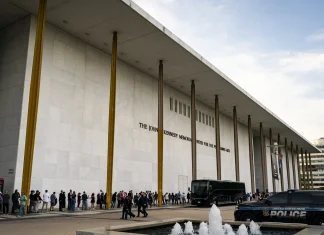In the Shadow of the Frontline: Russia’s Surge in Eastern Ukraine and the Fragile Hope of Peace
The crackle of artillery echoes across the scarred landscapes of Eastern Ukraine, a region where the tremors of war are felt with intimate, unrelenting intensity. In these contested strips of land, life dances precariously between survival and despair, and recent developments have cast a long, unsettling shadow over hopes for peace.
In the past 24 hours, the simmering conflict erupted into a new blistering pace. Russian forces, after months of grinding ahead inch by inch, have surged forward in a bold push, seizing roughly 110 square kilometers of territory—an advance unseen in over a year. This is no ordinary skirmish; it represents the sharpest movement in a front line defined by stalemate and attrition, signaling a potential shift as Moscow consolidates control over crucial eastern corridors.
The Geography of Struggle: Dobropillia and the Shifting Frontlines
At the heart of this renewed offensive lies the coal-mining town of Dobropillia, a spot steeped in industry and history—where smoke from chimneys has mingled with the dust of war. President Volodymyr Zelensky acknowledged the alarming progress, admitting Russian troops had carved through up to ten kilometers near the town—gaining ground where every meter counts. Yet, he voiced defiant resolve:
“We see clearly that the Russian army is not on a path to end the war. On the contrary—they are gearing up for new offensives. But our forces will destroy them.”
Behind those words lies a deeper narrative: a nation fueled by resilience, refusing to bow even when the tide turns sharply against it.
Civilians on the Edge: The Human Cost and Evacuations
As artillery shells rain and drones darken the skies, the human toll intensifies. In Donetsk region, Governor Vadym Filashkin issued a solemn directive: civilians—especially families with children—in towns like Bilozerske must evacuate immediately. This mandatory evacuation reflects growing fears that these communities might become battlegrounds. It’s a grim reminder that war’s most profound casualties are not strategic positions but the lives uprooted and shattered beyond repair.
The cold statistics mask lives in motion—families cradling what possessions they can, children clutching parents’ hands, the elderly unable to keep pace. These people, whose stories rarely fill international headlines, embody the war’s brutal costs.
Voices from Kramatorsk: Between Hope and Weariness
Only 20 kilometers from the front, the city of Kramatorsk pulses with a tense energy. Under the shadow of conflict, soldiers and civilians alike wrestle with the uncertainty of what tomorrow holds. “There have already been so many negotiations between leaders,” says 21-year-old Dmytro, a young Ukrainian soldier stationed there. His voice wavers between caution and cautious hope:
“If anything changes for the better, I would be only happy—but I’m not holding my breath.”
Dmytro’s skepticism is echoed by Artem, a 30-year-old serviceman, whose eyes betray the weight of weariness. “Putin is massing an army,” Artem observes bluntly. “He is stockpiling weapons. And while we stand here, he’s pulling the wool over the world’s eyes. This war will drag on for a long time.”
These personal narratives puncture the abstractness of geopolitics, grounding the conflict in everyday human experience. Their stories ask us to imagine: how do you soldier on when diplomacy feels distant, elusive, even meaningless?
Between Giants: Diplomacy on the Sidelines
While the front burns, powerful figures convene in chambers far removed from the clamor of battle. Ukrainian President Zelensky has been engaging in talks with European leaders, seeking solidarity and support. Yet, a sting lies in the diplomatic air: he remains absent from an anticipated summit between Russian President Vladimir Putin and former U.S. President Donald Trump.
This exclusion has sparked concern among Ukrainians and international observers alike. Could Zelensky’s absence foreshadow decisions regarding Ukraine’s sovereignty made without its voice? Many worry that concessions might be forced, pressing Ukraine into compromises costing dearly both territorially and morally.
The Bigger Picture: What Does This War Tell Us About Modern Conflict?
This renewed Russian push, the relentless shelling, drone assaults topping nearly 50 on a single night, and the harrowing evacuation orders all highlight not a war nearing an end but one potentially entering a grimmer, more destructive phase. Almost 19% of Ukraine’s territory remains under full or partial Russian control—a sobering statistic that paints a picture of a fragmented nation.
- Nearly 3.5 million people have been internally displaced since 2022, many fleeing eastern regions under threat.
- The economic cost for Ukraine is staggering, with infrastructure damaged or destroyed worth billions, and industries crippled.
- International military aid has flowed to Ukraine, but so have weapons on the opposing side—turning the region into a protracted frontline of proxy tensions.
What makes this conflict resonate globally is not just the clatter of artillery or geopolitical chess—it’s what it says about power, resilience, and human cost in the 21st century. This is a war that shapes identities and questions the viability of peace in a fractured world.
What Can We Learn, What Can We Hope For?
As news crews report the latest gains or losses, ordinary people live the consequences in real time. Behind the data of territorial advances and diplomatic choreography are communities clinging to hope, families staring down fear, and soldiers like Dmytro and Artem holding the line.
How do we, as global citizens, respond to stories like these? What responsibility do we bear when distant wars reshape communities and redraw borders? The answer may lie in more than statistics or political rhetoric. It’s found in empathy, in raising voices for those silenced by conflict, in advocating for peace that includes the voices of all involved.
And so, I invite you, reader, to ponder: what does the future hold for Eastern Ukraine? Will today’s advances lead to further bloodshed or a catalyst for genuine dialogue? The war’s heart beats on the ground, in the souls of its people. To forget them, to reduce conflict to mere numbers, is to lose sight of the human stories that demand our attention. Let us listen closely.


